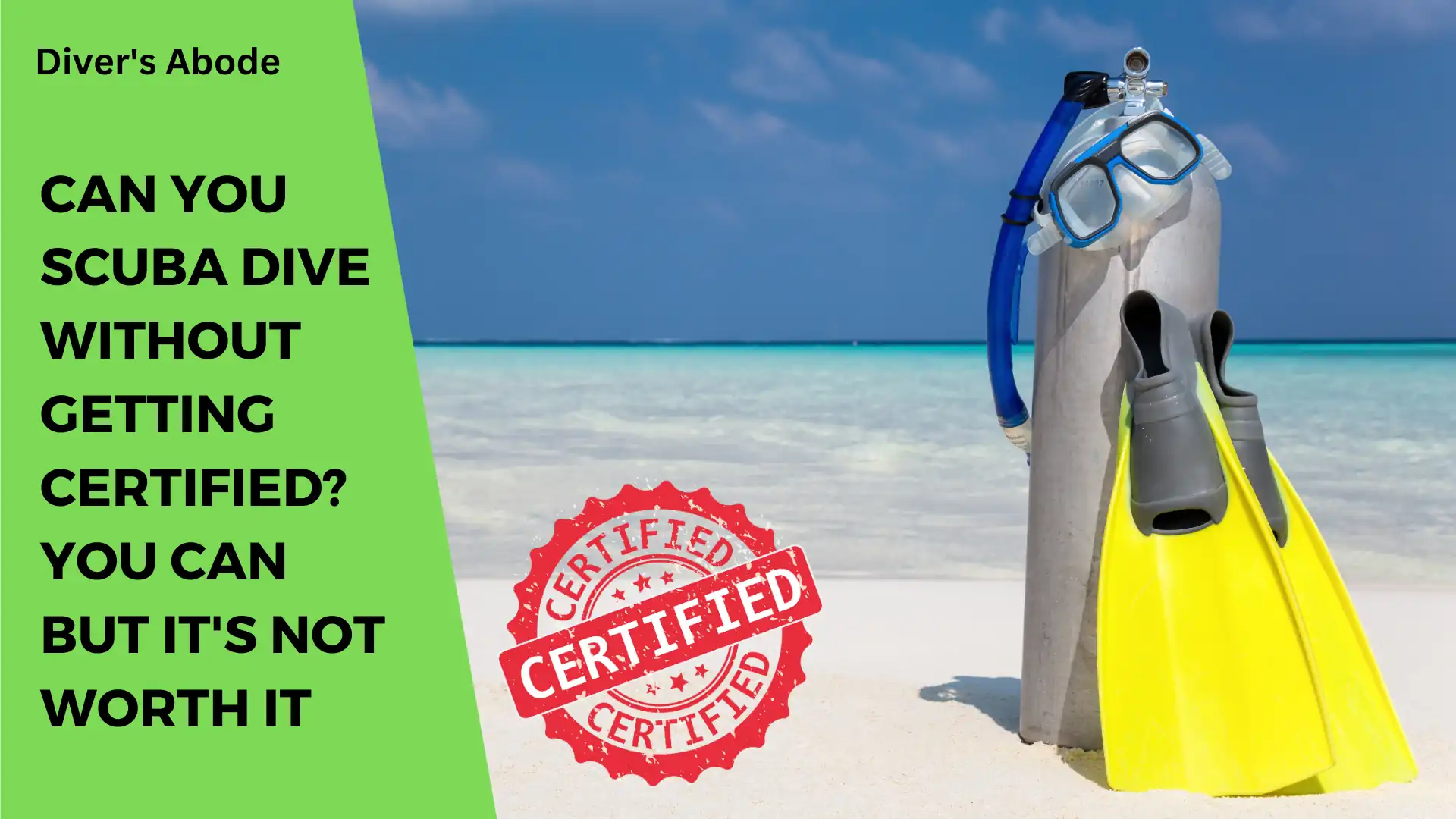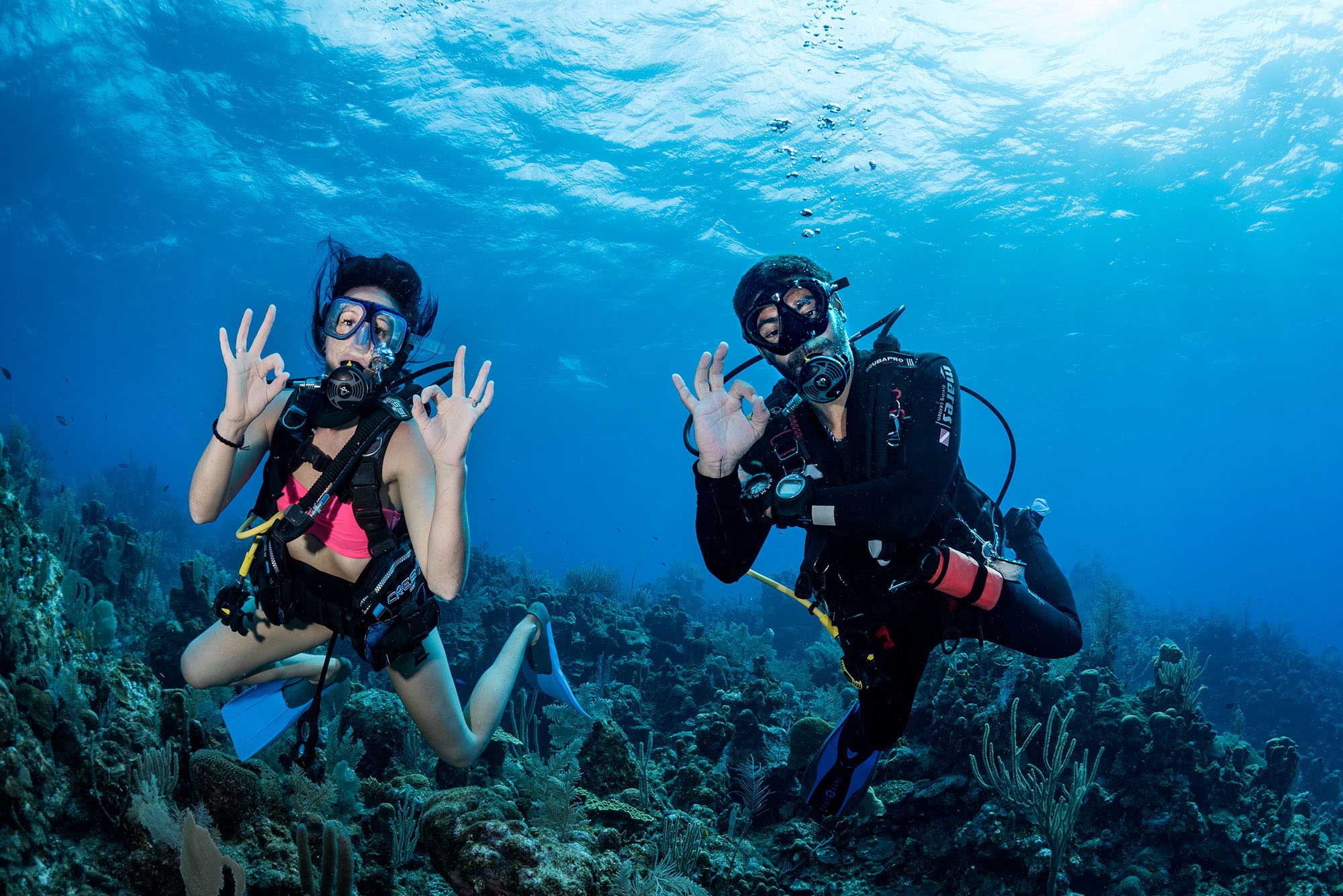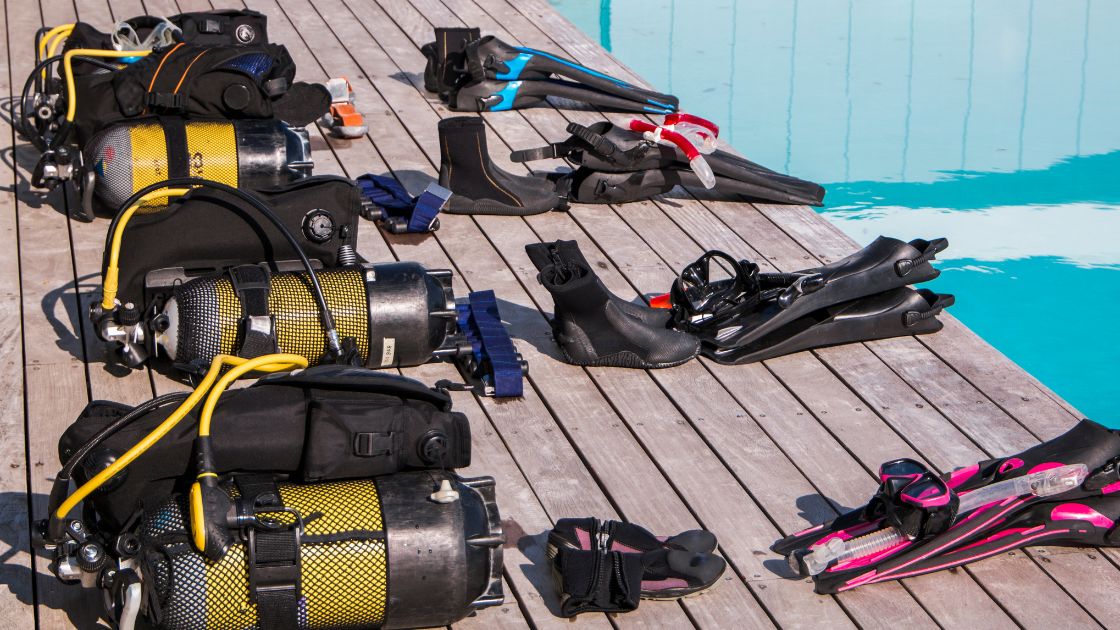Scuba diving offers an unparalleled sense of adventure, allowing enthusiasts to explore the mysteries of the underwater world. However, many beginners and even some experienced divers often ask: Can I scuba dive without an instructor? This question isn’t just about freedom—it touches on safety, legality, and the necessary skills for independent diving.
Diving without an instructor might seem liberating, but it comes with significant responsibilities.

Can I Scuba Dive Without an Instructor?
The short answer is yes, but only under specific conditions. Diving without an instructor requires proper training, certifications, and experience to ensure safety. Beginners and uncertified individuals should always dive under supervision. Independent diving demands thorough knowledge of dive planning, emergency handling, and equipment management. It’s not just about having the right gear but understanding how to use it effectively in diverse underwater scenarios.
Legal Requirements for Scuba Diving Without an Instructor
Certifications: The First Step
To scuba dive independently, you must possess recognized diving certifications. Certification agencies like PADI (Professional Association of Diving Instructors), NAUI (National Association of Underwater Instructors), or SSI (Scuba Schools International) offer courses designed to teach safe diving practices.
- Open Water Certification: This is the most basic certification required to dive independently. It allows divers to explore to a maximum depth of 18 meters (60 feet).
- Advanced Open Water Certification: This expands your depth limit to 30 meters (100 feet) and introduces specialized skills such as navigation and night diving.
Country-Specific Diving Laws
Scuba diving regulations vary by country. For instance:
- In Australia’s Great Barrier Reef, uncertified divers can join guided “discovery dives,” but self-guided diving requires certification.
- Thailand’s marine parks often mandate dive logs and certification checks.
- In the United States, dive centers commonly require proof of recent dives (within the last 6–12 months) alongside certification.
Understanding local laws is crucial before planning a dive. A good practice is to consult nearby dive shops or marine authorities for updated regulations.
Renting Gear and Accessing Dive Sites
Many dive centers enforce certification policies before renting gear or granting access to dive sites. Without proper certifications, you may struggle to access high-quality equipment or trusted dive charters. These restrictions exist to protect divers and marine environments from potential accidents and ecological harm.

Skills and Training Required
Diving without an instructor isn’t just about obtaining a certification; it’s about mastering the skills that ensure a safe and enjoyable experience. Independent scuba diving requires a solid foundation of knowledge, hands-on practice, and sometimes advanced training tailored to specific challenges.
Foundational Skills for Safe Diving
Before diving without an instructor, you need to develop a core set of scuba diving skills. These include:
- Buoyancy Control:
- Maintaining neutral buoyancy is essential for conserving energy and avoiding harm to marine ecosystems.
- Training includes proper weight adjustments, fine-tuning breathing techniques, and understanding your equipment.
- Reading Dive Instruments:
- Understanding dive computers, depth gauges, and pressure indicators is critical. These tools help track time, depth, and air supply to avoid exceeding safe limits.
- A common rule is adhering to the no-decompression limits, which prevent ascending too quickly and risking decompression sickness.
- Basic Underwater Communication:
- Without verbal communication, hand signals are your primary language. Mastering standard dive signals is crucial for sharing information, like air status or pointing out dangers.
Advanced Skills for Independent Diving
For divers ready to explore on their own, the following advanced skills are indispensable:
- Underwater Navigation:
- Self-guided dives require the ability to navigate using a compass, natural landmarks, or dive computers.
- Training often involves practicing in low-visibility conditions to build confidence.
- Problem-Solving and Emergency Response:
- From handling equipment failures to aiding distressed divers, quick thinking and calm action can save lives.
- Scenarios like out-of-air situations, entanglements, or mask malfunctions are part of advanced training.
- Understanding Dive Tables and Safety Stops:
- Dive tables help plan bottom times and ascent rates to avoid decompression sickness.
- Knowing when and how to execute a safety stop (typically at 15 feet for 3 minutes) is essential for safe ascents.
When Specialized Training Becomes Necessary
Certain situations call for additional certifications or specialized courses:
- Solo Diving Certification:
- Agencies like PADI offer a Self-Reliant Diver course. This course is designed for divers who want the confidence and tools to dive alone responsibly.
- Topics include gas management, redundancy in equipment, and psychological preparedness for solo dives.
- Rescue Diver Training:
- This course teaches techniques for assisting yourself and others during emergencies. It’s often considered a prerequisite for safe independent diving.
- Specialty Certifications:
- Night Diving: For exploring underwater at night or in low-light conditions.
- Wreck Diving: For navigating sunken ships or underwater structures.
- Deep Diving: For exploring depths beyond the recreational limit of 18 meters.
Case Study: How Training Saved a Diver
Consider the story of a certified diver who encountered a strong current while diving off the coast of Cozumel. Despite being alone, their navigation skills, buoyancy control, and emergency preparedness allowed them to safely ascend and signal for help using a Surface Marker Buoy (SMB). This incident underscores the importance of proper training before attempting independent dives.

Benefits and Risks of Diving Without an Instructor
Diving without an instructor is a natural progression for many scuba enthusiasts, offering a greater sense of freedom and self-reliance. However, it’s essential to weigh the benefits against the potential risks to make an informed decision about self-guided dives.
Benefits of Diving Without an Instructor
- Increased Flexibility and Independence:
- Without the constraints of group schedules or guided plans, you can design your dives to suit your preferences. Want to spend more time exploring a specific coral reef? You can.
- You have the freedom to choose the timing, dive sites, and pace that best suit your experience level.
- Opportunities to Hone Skills:
- Independent diving encourages divers to practice and refine skills such as navigation, buoyancy, and equipment management.
- Every self-guided dive builds confidence and enhances problem-solving abilities.
- Exploration and Personal Discovery:
- Self-guided dives allow for a more intimate and immersive experience with the underwater world.
- Diving without a group offers the chance to observe marine life without disruption, creating a deeper connection with the environment.
- Cost Savings:
- By diving independently, you can reduce expenses associated with hiring instructors or joining guided tours, particularly in popular destinations.
Risks of Diving Without an Instructor
While the benefits are attractive, diving without an instructor comes with notable risks that should not be ignored:
- Lack of Immediate Assistance:
- Instructors are trained to handle emergencies, from decompression sickness to equipment malfunctions. Diving without one removes this safety net.
- Solo divers must be prepared to manage all emergencies independently.
- Increased Potential for Errors:
- Misjudging dive site conditions, underestimating currents, or failing to adhere to planned depths and times are common mistakes among self-guided divers.
- Even experienced divers can miscalculate, leading to dangerous situations.
- Limited Emergency Resources:
- Without a dive guide, immediate access to emergency oxygen, first aid, or expert intervention may be unavailable.
- Solo diving heightens the risk as there’s no buddy to assist in critical situations.
- Environmental Hazards:
- Some dive sites present unique challenges, such as strong currents, low visibility, or marine life risks. Instructors are often familiar with these hazards and can help divers avoid them.
- Independent divers must rely solely on their research and planning to mitigate these risks.
Common Mistakes to Avoid
- Overconfidence:
- Assuming you’re ready for solo or instructor-free dives without sufficient training or recent dive experience can lead to trouble. Confidence should be based on skill, not assumption.
- Poor Dive Planning:
- Failing to account for weather conditions, tidal changes, or dive site complexity often leads to complications.
- Dive plans should include maximum depth, bottom time, emergency exit points, and contingencies.
- Neglecting Equipment Checks:
- Diving with poorly maintained or unfamiliar equipment increases the likelihood of malfunctions. Always inspect and test your gear thoroughly before diving.
Risk Mitigation Strategies
- Use a Dive Buddy: Even when diving without an instructor, having a buddy can dramatically improve safety. Your buddy can assist in emergencies, share navigation responsibilities, and monitor for signs of distress.
- Start in Familiar Waters: For your first few self-guided dives, choose sites you’ve previously explored with an instructor. This reduces the number of unknown variables.
- Carry Redundant Gear: Items like backup masks, regulators, and dive lights can prevent minor issues from escalating into emergencies.
Real-World Example: A Risky Solo Dive
In 2021, an experienced diver ventured solo into a well-known wreck site. A sudden shift in currents disoriented the diver, who had not prepared a reliable navigation plan. Without a buddy or guide, they struggled to ascend safely and later required decompression treatment. The incident highlights how poor planning and overconfidence can turn a routine dive into a crisis.

How to Prepare for Independent Scuba Diving
Preparation is the cornerstone of safe and enjoyable independent scuba diving. From assembling the right equipment to thorough planning, a meticulous approach ensures that you’re ready for self-guided adventures. Below, we’ll discuss the essential steps and considerations to prepare for independent dives.
1. Gear and Equipment Checklist
Diving without an instructor means taking full responsibility for your equipment. The right gear can make the difference between a smooth dive and an emergency.
Essential Equipment for Independent Diving:
- Scuba Tank and Regulator: Choose a well-maintained, appropriately sized tank. Regulators should be recently serviced.
- Dive Computer: Tracks depth, dive time, and ascent rates, ensuring safe diving practices.
- Buoyancy Control Device (BCD): Allows you to adjust buoyancy underwater. Ensure it fits well and operates smoothly.
- Wetsuit/Drysuit: Choose based on water temperature; a poor choice can lead to hypothermia or discomfort.
- Mask and Fins: Ensure a snug fit to avoid leaks or fatigue.
- Surface Marker Buoy (SMB): Essential for signaling your position to boats or during emergencies.
- Backup Gear:
- Redundant air supply (e.g., pony bottle or bailout bottle).
- Spare dive light, mask, and batteries.
Pre-Dive Equipment Checks: Always inspect your gear before entering the water:
- Verify tank pressure and regulator functionality.
- Check for leaks in hoses and seals.
- Ensure all straps and buckles are secure and intact.
2. Dive Planning Basics
When diving without an instructor, a solid dive plan is essential to reduce risks and ensure a successful outing.
Key Dive Planning Steps:
- Research the Dive Site:
- Understand the topography, depth, currents, and potential hazards of the area.
- Check tide charts and weather forecasts for optimal conditions.
- Set Dive Objectives:
- Define what you aim to achieve (e.g., exploring a reef, practicing skills, photography).
- Avoid overly ambitious plans, especially if the site is new to you.
- Establish a Dive Profile:
- Plan your maximum depth and bottom time based on your experience level and air consumption rate.
- Factor in safety stops (e.g., 15 feet for 3–5 minutes) to minimize decompression risks.
- Emergency Planning:
- Identify emergency exit points and establish signals for distress.
- Share your dive plan and expected return time with someone onshore or at the dive shop.
3. Using a Dive Buddy
While solo diving is an option for highly skilled and certified individuals, using a dive buddy significantly improves safety and enjoyment.
Advantages of a Dive Buddy:
- Mutual Assistance: Your buddy can help in case of equipment failure, disorientation, or medical emergencies.
- Navigation Support: Sharing navigation tasks reduces the risk of getting lost.
- Safety Monitoring: Buddies can check each other for early signs of fatigue, nitrogen narcosis, or other issues.
Selecting a Reliable Dive Buddy:
- Choose someone with similar or greater experience and training.
- Agree on communication signals and dive objectives before entering the water.
4. Familiarization with Dive Site Hazards
Independent diving often involves unknown factors that can pose challenges.
Potential Hazards:
- Currents: Research current patterns and practice drift diving in controlled environments.
- Marine Life: Understand the local ecosystem and identify potentially dangerous species like jellyfish, lionfish, or sharks.
- Visibility: Poor visibility can increase the difficulty of navigation. Bring high-powered dive lights to assist in murky waters.
Pro Tips for Dive Preparation
- Stay Physically Fit: Scuba diving demands stamina and strength. Regular exercise can enhance your ability to manage physical stress underwater.
- Log Your Dives: Maintain a detailed dive log to track your progress and experience. Many dive shops and instructors ask for recent logs to verify your readiness for new challenges.
- Keep Learning: Consider specialty courses like underwater photography or drift diving to build additional skills and confidence.
Case Study: Preparation Pays Off
A group of experienced divers planned a self-guided dive in the Red Sea, notorious for strong currents. By studying tide charts, carrying redundant gear, and rehearsing emergency protocols, they navigated the dive safely and captured stunning photos of coral reefs. Their preparation ensured a safe and rewarding experience, even without an instructor.